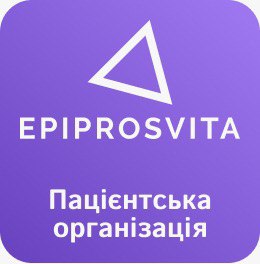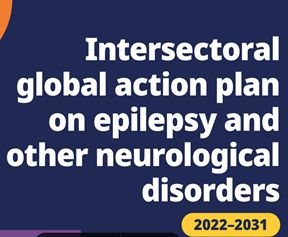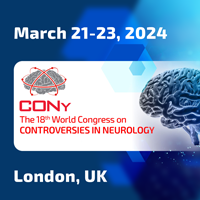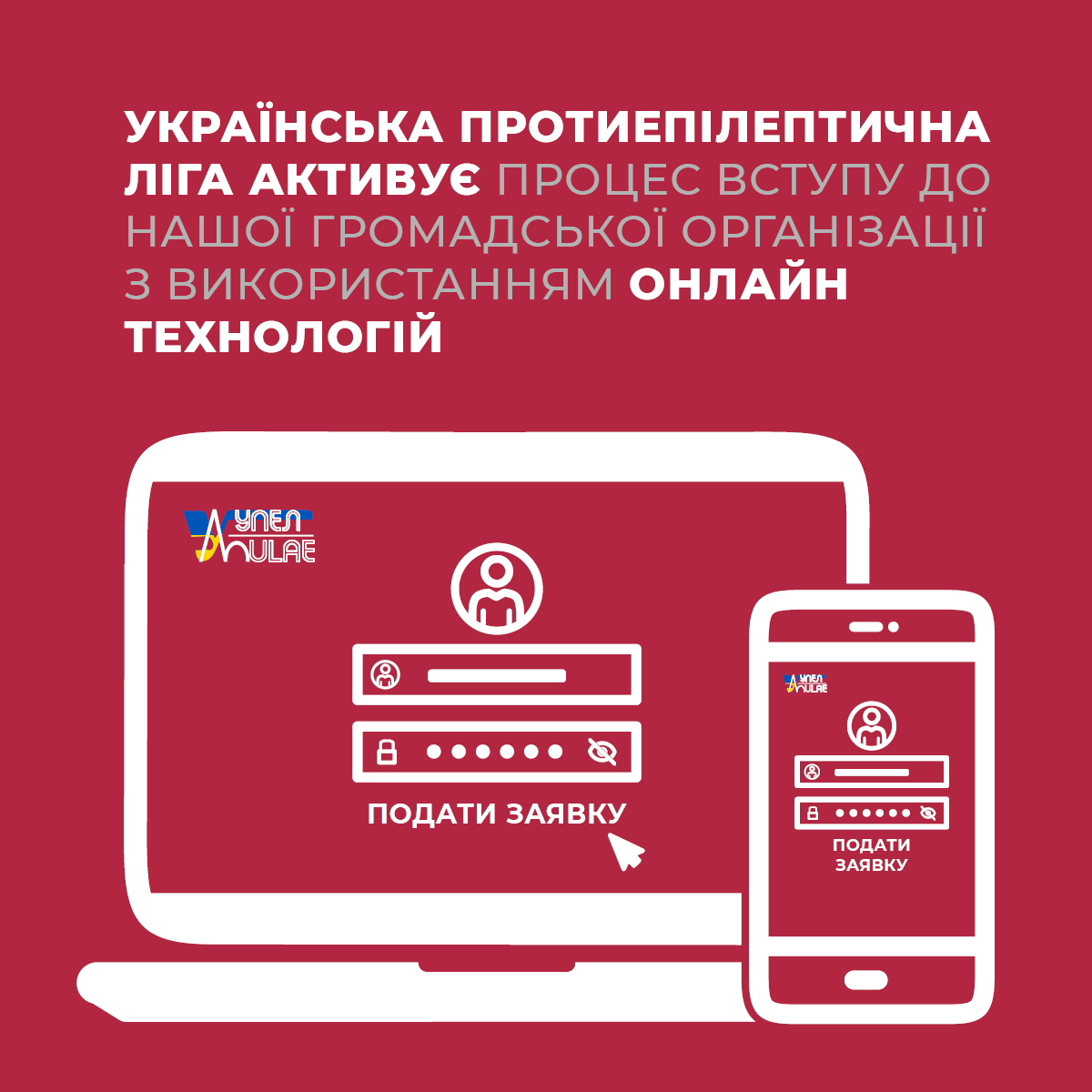Seizure 2020, Vol 80, Editor’s Choice: The role of chronobiology in drug-resistance epilepsy: The potential use of a variability and chronotherapy-based individualized platform for improving the response to antiseizure drugs
For many people with epilepsy, the unpredictability of their seizures is a particularly disabling aspect of the condition. It is primarily because of this unpredictability that activities have to be restricted, certain jobs become impossible or people may not be allowed to drive a motor vehicle. However, several recent studies have demonstrated that – surprisingly often – epileptic seizures are not an entirely random occurrence. Leaving aside those who are able to identify (and avoid) particular seizure triggers, these studies suggest that the likelihood of seizure occurrence often follows a steady pattern raising the possibility that the risk of seizures could be forecast, similarly to the risk of rain. While the majority of epilepsies have been shown to be subject to some degree of diurnal variation (1), seizures stick very closely to a predictable pattern in 10 or 20% of patients (who have often not noticed this) (2).
My Editor’s Choice paper from the current issue of Seizure is an article by Assaf Potruch, Salim T. Khoury and Yaron Ilan (3). I their wide-ranging narrative review Potruch et al. initially consider the currently recognized mechanisms for the pharmacoresistance of epilepsies before exploring how natural body rhythms could be harnessed to improve the responsiveness to treatments – including the antiepileptic drugs already at our disposal today. Similarly to researchers attempting to treat currently incurable conditions with existing but repurposed drug treatments for other disorders, they propose using interventions we already have in our arsenal, but using them in a much more targeted way by observing and taking account of the natural brain and body rhythms and by avoiding potential iatrogenic effects of regular drug dosing potentially including the loss of effectiveness. Potruch et al. argue that our exisiting antiseizure treatments could be much more effective if they were delivered in a more targeted fashion, especially at precisely the time they are needed. Given that epilepsy is a highly heterogenous condition an ideal chronobiologically informed treatment would take account of a broad range of specifics characterizing a person’s epilepsy and also monitor their brain and body rhythms. Some of these ideas are not new but the closed-loop deep brain stimulation systems now used routinely in some countries contain the technology that makes the detection of the rhythms which co-determine the timing of seizures much more feasible. Perhaps this technology could be repurposed to administer individually optimized pharmacological treatments in the future.
References:
1) Quigg M. Circadian rhythms: interactions with seizures and epilepsy. Epilepsy Res 2000;42:43-55
2) Karoly PJ, Goldenholz DM, Freestone DR, et al. Circadian and circaseptan rhythms in human epilepsy: a retrospective cohort study. Lancet Neurol 2018;17:977-85.
3) Potruch A, Khoury ST, Ilan Y. The role of chronobiology in drug-resistance epilepsy: The potential use of a variability and chronotherapy-based individualized platform for improving the response to antiseizure drugs. Seizure 2020; 80: 201-211
Seizure 2020, Том 80, Вибір редактора: Роль хронобіології у у лікуванні фармакорезистентної епілепсії: потенційне використання варіабельності та індивідуалізованої платформи на основі хронотерапії для покращення реакції на антиепілептичні препарати
Для багатьох людей з епілепсією непередбачуваність їх нападів є особливо неприємним аспектом стану. Передусім через цю непередбачуваність потрібно обмежувати діяльність, певні професії забороняються, таким людям не дозволяють керувати автотранспортом. Однак кілька недавніх досліджень показали, що епілептичні напади – на подив часто – не є повністю випадковим явищем. Залишаючи осторонь тих, хто здатний виявити (і уникнути) конкретних тригерів нападів, ці дослідження припускають, що ймовірність виникнення нападів часто слідує стійкій схемі, що збільшує можливість прогнозування ризику нападів, аналогічно ризику дощу. Хоча було показано, що більшість епілепсій піддаються деякій мірі добової варіабельності (1), напади дуже близькі до передбачуваного патерну у 10% або 20% пацієнтів (які часто цього не помічали) (2).
Мій редакційний вибір з поточного журналу «Напад» - це стаття Assaf Potruch, Salim T. Khoury та Yaron Ilan (3). У їх широкому огляді спочатку були розглянуті відомі на даний момент механізми фармакорезистентності епілепсії, перш ніж вивчити, як природні ритми тіла можна використати для покращення чутливості до методів лікування - включаючи антиепілептичні препарати, які вже є у нас в розпорядженні. Подібно дослідникам, які намагаються лікувати у даний час невиліковні стани за допомогою існуючих, але перепрофільованих медикаментозних методів лікування інших розладів, вони пропонують використовувати втручання, які вже є в нашому арсеналі, але використовувати їх набагато більш цілеспрямовано, спостерігаючи і беручи до уваги природні ритми мозку і тіла та уникаючи потенційних ятрогенних ефектів регулярного дозування ліків, потенційно включаючи втрату ефективності. Potruch та співавт. стверджують, що наші існуючі антиепілептичні методи лікування могли б бути набагато більш ефективними, якби вони здійснювалися більш цілеспрямовано, особливо в той час, коли вони необхідні. Враховуючи, що епілепсія є вкрай гетерогенним станом, ідеальне хронобіологічне обґрунтоване лікування повинно враховувати широкий спектр особливостей, що характеризують епілепсію у людини, а також контролюють його мозкові і тілесні ритми. Деякі з цих ідей не є новими, але системи глибокої стимуляції мозку із замкнутим циклом, які зараз використовуються в деяких країнах в рутинній практиці, містять технологію, яка робить виявлення ритмів, що визначають час нападів, набагато більш можливим. Можливо, в майбутньому цю технологію можна буде використовувати для проведення індивідуально оптимізованих фармакологічних втручаннь.
References:
1) Quigg M. Circadian rhythms: interactions with seizures and epilepsy. Epilepsy Res 2000;42:43-55
2) Karoly PJ, Goldenholz DM, Freestone DR, et al. Circadian and circaseptan rhythms in human epilepsy: a retrospective cohort study. Lancet Neurol 2018;17:977-85.
3) Potruch A, Khoury ST, Ilan Y. The role of chronobiology in drug-resistance epilepsy: The potential use of a variability and chronotherapy-based individualized platform for improving the response to antiseizure drugs. Seizure 2020; 80: 201-211
In the countries which were initially ravaged by the COVID-19 pandemic, people are now emerging again from the lock-down imposed by their governments in an attempt to “flatten the curve” and protect health systems from becoming overwhelmed by patients badly affected by the virus. In these countries the attention is shifting from the emergency provision of extra hospital beds and ventilators to the development of new ways of working intended to reduce the infection risk to patients and clinicians – such as telephone or video-phone consultations. Routine surgical procedures are rescheduled, often after complex preparations including testing for COVID-19 infection and quarantine procedures. While life is still far from what was “normal” not so long ago, people are experimenting with a new kind of normality that may be sustainable for months, and possibly longer. Physicians in these countries may feel that I am a little behind with my editor’s choice from the current volume of Seizure, a narrative review about the epileptological consequences of corona virus infections by Ali Asadi-Pooya (1). However, while the panic which certainly coloured the initial responses to the pandemic may have settled in the countries described above, many other countries – mostly with far fewer resources than those that were hardest hit by the first wave of the pandemic are still experiencing dramatic increases in case numbers. Clinicians in these countries will still be looking around anxiously for anything they can learn about COVID-19.
One thing clinicians specializing in the treatment of seizure disorders will learn from the review by Dr. Asadi-Pooya is that previous experience with other corona viruses (such as SARS or MERS) suggests that their services may occasionally be called upon. These and other corona viruses do not only affect the respiratory organs through which they enter the body, they are also capable of causing encephalitides which may be associated with seizures (2,3).
Similarly COVID-19 can cause neurological symptoms. In one case series based on observations among 219 patients admitted to hospital with serious COVID-19 infections in China, 36.4% had neurologic manifestations. The commonest symptoms were dizziness (17%) and headache (13.1%). Impairment of taste (6%) and smell (5%) were also quite common. Depending on whether the cases were categorised as “severe” or “non severe”, stroke, brain haemorrhage or TIAs were seen in 6% vs 1%, impaired consciousness in 15% vs 3%, and skeletal muscle injury in 19% vs 5% (4).
Although there are only sporadic reports of seizures or status epilepticus in the context of COVID-19 infections so far, it would be surprising if the many haematological, immunological and metabolic complications attributed to this virus or – or the treatments of these complications – were never associated with epileptological complications, especially with non-convulsive status epilepticus which may well be missed in settings where neurologists are not involved in providing front line care and access to EEG is limited because of resource limitation or because of infection control measures.
References:
1) Asadi-Pooya A. Seizures associated with coronavirus infections. Seizure 2020; 79: 49-52
2) Li Y, Li H, Fan R, Wen B, Zhang J, Cao X, et al. Coronavirus Infections in the Central Nervous System and Respiratory Tract Show Distinct Features in Hospitalized Children. Intervirology 2016; 59: 163-169.
3) Saad M, Omrani AS, Baig K, Bahloul A, Elzein F, Matin MA, et al. Clinical aspects and outcomes of 70 patients with Middle East respiratory syndrome coronavirus infection: a single-center experience in Saudi Arabia. Int J Infect Dis 2014; 29: 301-306.
4) Mao L, Jin H, Wang M, et al. Neurologic Manifestations of Hospitalized Patients With Coronavirus Disease 2019 in Wuhan, China. JAMA Neurol. Published online April 10, 2020. doi:10.1001/jamaneurol.2020.1127
Seizure 2020, Том 79, Вибір редактора: Напади, які пов'язані з коронавірусними інфекціями
У країнах, які спочатку були спустошені пандемією COVID-19, зараз люди знову виходять із блокування, запровадженого їхніми урядами, у спробі «сплющити криву» та захистити системи охорони здоров’я від переповнення пацієнтів, які сильно постраждали від вірусу. У цих країнах увага зміщується з екстреного надання додаткових лікарняних ліжок і апаратів штучної вентиляції легенів на розробку нових способів роботи, спрямованих на зниження інфекційного ризику для пацієнтів і лікарів – клініцистів, таких як телефонні або відеотелефонні консультації. Планові хірургічні процедури переносяться, часто після складних приготувань, включаючи тестування на інфекцію COVID-19 і карантинні процедури. У той час як життя все ще далеке від того, що було "нормальним" не так давно, люди експериментують з новим видом нормальності, яка може бути стабільною протягом багатьох місяців, а можливо і довше. Лікарі цих країн можуть відчути, що я трохи відступаю від мого вибору як редактора з поточного номеру «Seizure», огляду розповіді про епілептологічні наслідки корона-вірусних інфекцій Ali Asadi-Pooya (1). Проте в той час як паніка, яка, безумовно, забарвлювала початкові відповідні заходи на пандемію, можливо, вже вляглася в країнах, описаних вище, багато інших країн – в основному з набагато меншими ресурсами, ніж ті, які найбільше постраждали від першої хвилі пандемії, - все ще відчувають різке збільшення числа випадків захворювання. Клініцисти в цих країнах все ще будуть з тривогою озиратися навколо в пошуках всього, що вони можуть дізнатися про COVID-19.
Одна річ, яку клініцисти, що спеціалізуються на лікуванні епілепсії, дізнаються з огляду доктора Ali Asadi-Pooya, полягає в тому, що попередній досвід роботи з іншими коронавірусами (такими як SARS або MERS) показує, що їхні послуги іноді можуть бути затребувані. Ці та інші коронавіруси не тільки вражають органи дихання, через які вони потрапляють в організм, але і здатні викликати енцефаліти, що можуть бути пов'язані з нападами (2,3).
Так само COVID-19 може викликати і інші неврологічні симптоми. В дослідженні що базується на спостереженнях 219 пацієнтів, які поступили в лікарню з серйозними інфекціями COVID - 19 в Китаї, 36,4% мали неврологічні прояви. Найбільш частими симптомами були запаморочення (17%) і головний біль (13,1%). Порушення смаку (6%) і нюху (5%) також було досить поширеним явищем. Залежно від того, чи були ці випадки класифіковані як «важкі» або «неважкі», інсульт, крововилив в мозок або ТІА спостерігалися у 6% проти 1%, порушення свідомості – у 15% проти 3% та пошкодження скелетних м'язів – у 19% проти 5% (4).
Хоча досі існують лише спорадичні повідомлення про епілептичні напади або епілептичний статус у контексті інфекції COVID-19, було б дивно, якби багато гематологічних, імунологічних та метаболічних ускладнень, які приписували цьому вірусу, або лікування цих ускладнень - ніколи не були пов'язані з епілептологічними ускладненнями, особливо з неконвульсивним епілептичним статусом, який може бути пропущений в умовах, коли неврологи не беруть участь у наданні первинної допомоги, а доступ до ЕЕГ обмежений через обмеженість ресурсів або через заходи інфекційного контролю.
References:
1) Asadi-Pooya A. Seizures associated with coronavirus infections. Seizure 2020; 79: 49-52
2) Li Y, Li H, Fan R, Wen B, Zhang J, Cao X, et al. Coronavirus Infections in the Central Nervous System and Respiratory Tract Show Distinct Features in Hospitalized Children. Intervirology 2016; 59: 163-169.
3) Saad M, Omrani AS, Baig K, Bahloul A, Elzein F, Matin MA, et al. Clinical aspects and outcomes of 70 patients with Middle East respiratory syndrome coronavirus infection: a single-center experience in Saudi Arabia. Int J Infect Dis 2014; 29: 301-306.
4) Mao L, Jin H, Wang M, et al. Neurologic Manifestations of Hospitalized Patients With Coronavirus Disease 2019 in Wuhan, China. JAMA Neurol. Published online April 10, 2020. doi:10.1001/jamaneurol.2020.1127
Seizure 2020, Vol 78, Editor’s Choice: ”Keep Safe: The when, why and how of epilepsy risk communication”
Given that the current issue of Seizure includes two review articles and one editorial commentary on the discussion of risk in clinical encounters between clinicians and patients with epilepsy (1-3), I felt obliged to make one of these contributions my Editor’s Choice. The fact that scientific papers focusing on the communication of risks should be submitted to a journal about seizures is no surprise. I am not sure that I can recall a single consultation in which risks were not considered - and not many in which risks were not explicitly discussed. When a seizure disorder is first diagnosed, patients and clinicians need to think about risks related to activities such as cooking, bathing, childcare, work, recreation and driving. As the focus moves to treatment, they will consider the risk of further seizures versus those of idiosyncratic or dose-related adverse effects, teratogenicity and interactions with other medications or medical conditions. Risks become a particularly prominent concern when patients are planning pregnancy, pregnant or considering surgical procedures for epilepsy.
In view of the prominent role more or less formal risk assessments play in routine epileptological practice, the first finding of the systematic review by Cordet Anne Smart et al. (1), my Editor’s Choice from this issue, is rather surprising: notwithstanding the fact that the present issue of Seizure contains several contributions about the topic the literature about risk discussions is actually very limited. Although quantitative and qualitative studies were within the scope of this review, the authors were only able to identify 17 relevant studies – largely limited to the discussion of Sudden Unexpected Death in Epilepsy (SUDEP). What we learn from these studies is that patients would like an early discussion of SUDEP (although the timing should be individually adjusted), and that clinicians may be more anxious of discussing this subject than patients. Patients want the SUDEP risk to be explained to them face-to-face (perhaps with additional written material to back up the discussion), and may benefit from an explanation provided by a more senior and experienced clinician. Checklists to guide the conversation exist but the effects of their use have not been well studied.
Unfortunately, we need to know much more about this topic. As pointed out by Roy Beran in his editorial comment (3), it makes a lot of sense to discuss the risk of SUDEP in the context of the many other risks, which patients need to consider as they learn to live with a seizure disorder. In view of the great heterogeneity of epileptic seizure disorders and the individuals who experience them, much more work will be needed before truly “evidence-based” practice recommendation can be made for different communication scenarios – although it is clear that the discussion of risks has to be individualized if it is going to be meaningful for specific patients. It would also be important to extend the range of methodologies that are brought to bear to improve communication about risks in the context of seizure disorders. Questionnaires and surveys cannot tell us much about what exactly clinicians say, and how patients and accompanying individuals make sense of this, during clinical encounters. Previous studies have used Conversation Analysis in epileptological settings. The discussion of risk would be an ideal focus for future studies using this or similar methodologies.
While the review by Smart et al. provides a very helpful summary of the literature to date it is therefore more than anything a call for clinicians to reflect on a key area of their daily practice and for researchers to study this field more deeply.
References:
1) Smart CA, Page G, Shankar R and Newman C. Keep Safe: The when, why and how of epilepsy risk communication. Seizure 2020, please add bibliographic details. Seizure 2020; 78, 136-149
2) Cooper K, Kirkpatrick P, Brand C, Rolfe A, Florida-James S. Discussing sudden unexpected death in epilepsy with children and young people with epilepsy and their parents/carers: a mixed methods systematic review. Seizure 2020, please add bibliographic details.
3) Beran R. Discussing the risks related to epilepsy – an holistic approach. Seizure 2020, please add bibliographic details.
4) Toerien M, Shaw R, Duncan R, Reuber M. Offering patients choices: a pilot study of interactions in the seizure clinic. Epilepsy Behav. 2011;20(2),312-20.
Seizure 2020, Том 78, Вибір редактора: «Зберігайте безпеку: коли, чому і як відбувається зв'язок з ризиком розвитку епілепсії»
Враховуючи, що поточний номер журналу «Seizure» включає в себе дві оглядові статті та один редакційний коментар щодо обговорення ризику під час клінічних консультацій між лікарями та пацієнтами з епілепсією (1-3), я вважаю за необхідне зробити один з цих матеріалів моїм вибором як редактора. Той факт, що наукові статті, присвячені поширенню інформації про ризики, необхідно представити в журналі «Seizure», не викликає здивування. Я не впевнений, що можу пригадати хоча б одну консультацію, на якій не розглядалися б ризики, і не так вже й багато таких консультацій, на яких не обговорювалися б ці ризики в явному вигляді. Коли вперше діагностують епілепсію, пацієнтам та клініцистам необхідно задуматися про ризики, пов’язані з такими видами діяльності як приготування їжі, купання, догляд за дітьми, робота, відпочинок та керування автомобілем. Оскільки основна мета – це лікування, вони розглядають ризик подальших нападів у порівнянні з тими, що пов'язані з ідіосинкратичними або дозозалежними побічними ефектами, тератогенністю та взаємодією з іншими лікарськими засобами або медичними станами. Ризики стають особливо помітною проблемою, коли пацієнти планують стати батьками, вагітніють або розглядають хірургічні процедури з приводу лікування епілепсії.
Незважаючи на помітну роль, яку відіграють більш-менш формальні оцінки ризику в рутинній епілептичній практиці, перший висновок систематичного огляду Cordet Anne Smart et al. (1), Мій Вибір як Редактора з цього питання досить незвичайний: незважаючи на те, що поточний номер «Seizure» містить кілька матеріалів по темі, даних про обговорення ризиків насправді недостатньо. Незважаючи на те, що в сфері даного огляду було розглянуто кількісні та якісні дослідження, автори виділили лише 17 відповідних досліджень – в основному вони були обмежені обговоренням синдрому раптової несподіваної смерті при епілепсії (SUDEP). Завдяки цим дослідженням ми дізналися, що пацієнти бажали отримувати своєчасне обговорення про (терміни потрібно індивідуально скоригувати), проте клініцисти можуть бути більш стурбовані обговоренням цього питання, ніж хворі. Пацієнти хочуть, щоб ризик SUDEP був пояснений їм віч-на-віч (можливо, з додатковими письмовими матеріалами для обговорення), і вони можуть скористатися поясненнями, які надає більш досвідчений лікар. Існують чеклисти з інструкціями, як проводити ці консультації, але дані їх використання мало вивчені.
На жаль, ця тема недостатньо вивчена. Як зазначив Roy Beran у своєму редакційному коментарі (3), має сенс обговорювати ризик SUDEP серед багатьох інших ризиків, які пацієнти повинні враховувати, коли вони навчаються жити з епілептичним розладом. Через велику неоднорідність епілептичних нападів та людей, які страждають на ці напади, знадобиться більше знань, перш ніж по-справжньому «засновані на доказах» практичні рекомендації для різних сценаріїв спілкування - хоча очевидно, що до обговорення ризиків слід підходити індивідуально до кожного пацієнта. Крім того, було б важливо розширити діапазон використаних методологій для поліпшення спілкування про ризики в контексті епілептичних розладів. Анкети та опитувальники не можуть дати нам достатньої інформації про те, що саме говорять клініцисти, і як пацієнти та супроводжуючі їх особи розуміють це під час консультацій. Попередні дослідження використовували аналіз спілкування на цю тему в епілептологічних центрах. Обговорення питання про ризик було б ідеальним напрямком для майбутніх досліджень з використанням цієї або аналогічних методів.
У той час як огляд Smart et al. містить корисний огляд літератури, на сьогоднішній день це більше, ніж заклик до клініцистів про міркування цього напрямку, як ключового в їх повсякденній практиці і для дослідників, щоб вивчити цю сферу більш детально.
References:
1) Smart CA, Page G, Shankar R and Newman C. Keep Safe: The when, why and how of epilepsy risk communication. Seizure 2020, please add bibliographic details. Seizure 2020; 78, 136-149
2) Cooper K, Kirkpatrick P, Brand C, Rolfe A, Florida-James S. Discussing sudden unexpected death in epilepsy with children and young people with epilepsy and their parents/carers: a mixed methods systematic review. Seizure 2020, please add bibliographic details.
3) Beran R. Discussing the risks related to epilepsy – an holistic approach. Seizure 2020, please add bibliographic details.
4) Toerien M, Shaw R, Duncan R, Reuber M. Offering patients choices: a pilot study of interactions in the seizure clinic. Epilepsy Behav. 2011;20(2),312-20.





